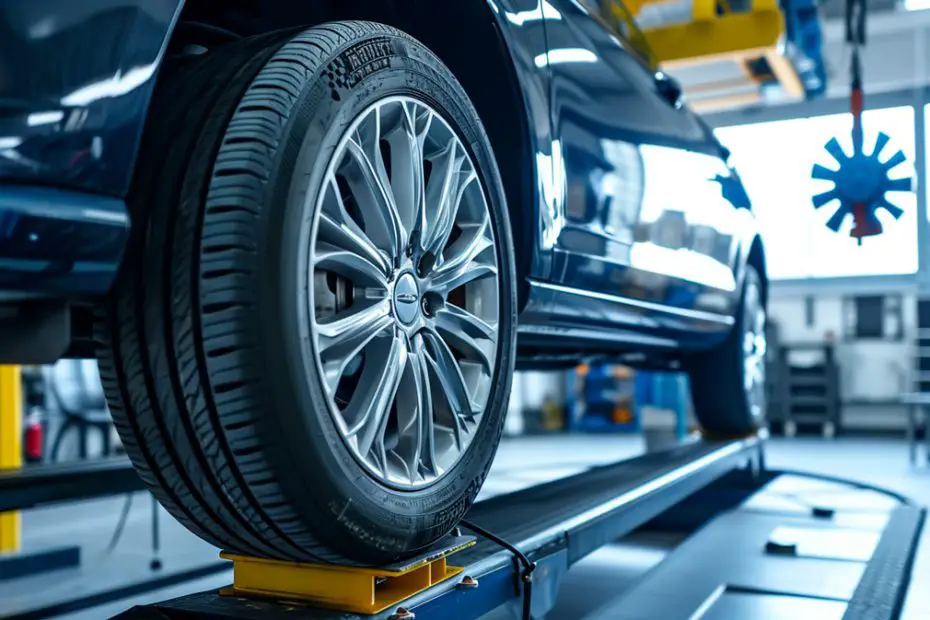Wheel alignment is crucial for the health of your car, affecting everything from tire wear to handling. I’ll dive into the nitty-gritty of toe and camber adjustments, two key components that keep your ride smooth and your tires lasting longer.
Understanding the basics of toe and camber can seem daunting, but I’m here to break it down. Whether you’re a car enthusiast or just trying to maintain your vehicle, getting these settings right can make a world of difference.
Regular checks are a must, but knowing what to look for is even better. Stick around as I explain how these adjustments impact your driving experience and how to ensure your wheels are set up for success.
The Importance of Wheel Alignment
When I talk about the upkeep of my car, one aspect I never overlook is wheel alignment. It’s a fundamental component that affects not just tire longevity but overall vehicle safety. Misaligned wheels can lead to uneven tire wear, compromising the grip and performance of the tires. This means they may require replacement much sooner than anticipated, driving up maintenance costs over time.
Maintaining proper wheel alignment is crucial for optimal driving conditions. It enables the car to move straight without pulling to one side, ensuring a smoother ride. If I notice the steering wheel is off-center when driving on a straight road or if the vehicle is drifting, these are clear indicators that alignment might need checking. Handling issues can pop up, especially during emergency maneuvers, if the alignment is out of spec, which can be dangerous.
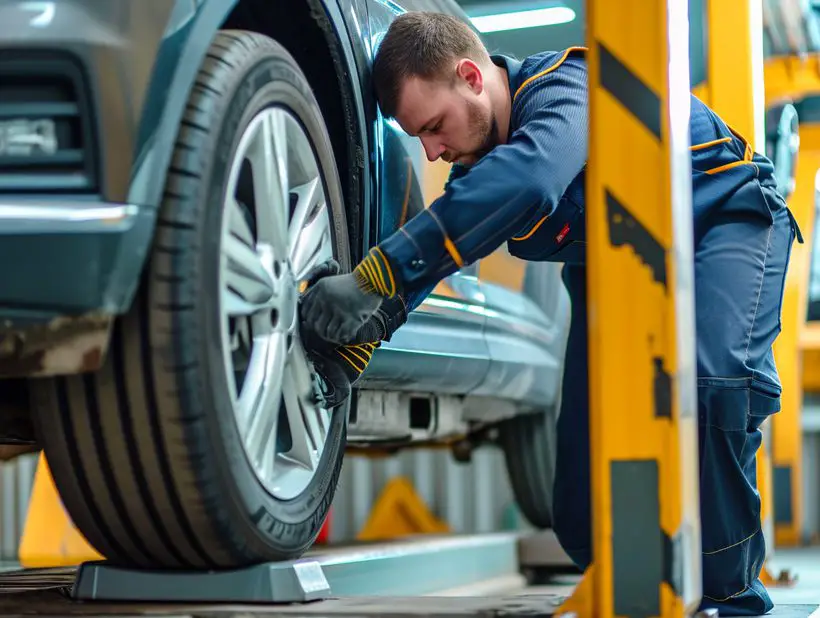
Regular alignment checks are recommended. Mechanics suggest aligning your wheels every 6,000 miles or as advised by your vehicle’s manufacturer. Skipping this can lead to poor fuel efficiency as the engine works harder to push misaligned tires. This not only hits the wallet but also the environment as it results in higher emissions.
| Situation | Alignment Check Frequency |
|---|---|
| General Driving | Every 6,000 Miles |
| After Tire Change | Immediate |
| Post Accident | Immediate |
It’s not just about the frequency but also about being attentive to the car’s handling quirks. Any change in the driving experience should prompt a check-up‚Äîwhether it’s a regular maintenance window or an unplanned visit after hitting a deep pothole. Garages with qualified technicians have the necessary tools to adjust toe and camber settings, restoring a car‚Äôs alignment to the precise angles required for safe driving.
Understanding the precise adjustments within wheel alignment, particularly toe and camber, allows for informed discussions with mechanics. Toe refers to the angle of the tires in relation to the vehicle’s centerline. Improper toe settings can lead to a ‚Äòsawing‚Äô motion on the tread, which physically erodes the tire. Camber, the inward or outward tilt of the tire, if incorrect, can result in the tire riding on the inside or outside edge, severely reducing tire life. My awareness of these terms not only saves me money on tire costs but also ensures a safer driving experience for me and my passengers.
An Overview of Toe and Camber

When I chat with fellow car enthusiasts or help friends understand what wheel alignment is all about, two terms often come up: toe and camber. They’re critical to how a car handles the road, and let’s face it — a smooth, responsive ride is what we’re all after.
Toe refers to the angle of the wheels in relation to the vehicle’s centerline. Imagine looking down at your feet ‚Äì if your toes point inward, this is akin to a condition known as “toe-in” on a car. Alternatively, “toe-out” is when the wheels are turned slightly outward. Getting the toe just right is a balancing act. Too much toe-in or toe-out causes uneven tire wear and affects handling. I’ve found that toe settings can be quite sensitive to changes and require a keen eye during alignment.
As for camber, it’s the inward or outward tilt of the tire when viewed from the front of the vehicle. Think of it as the lean of the tire ‚Äì a positive camber means the top of the tires are tilting away from the car whereas a negative camber indicates the top leaning inward. Here’s the thing: while a slight negative camber can improve grip during cornering, too much can be detrimental, leading to premature tire wear and a less stable ride.
Adjusting these angles is no layman’s task and understanding the intricate balance is key. As I delve into the specifics, I aim to highlight a few simple checks that anyone can do to assess their wheel alignment:
- Inspect your tire wear regularly. If you see uneven wear patterns, it may hint at misalignment.
- Pay attention to how your car drives. Does it pull to one side? That’s a telltale sign.
- After hitting a significant pothole or curb, check if there’s a noticeable change in the handling or steering.
By keeping an eye out for these issues, you’re taking proactive steps in maintaining the health of your vehicle. Proper toe and camber adjustments ensure that your car not only runs efficiently but also keeps you safe on the road. It’s fascinating how these minor tweaks make a world of difference in driving dynamics.
Toe Adjustment: What You Need to Know
When it comes to keeping your car running straight, toe adjustment plays a pivotal role. Here’s how I understand it: imagine walking with your feet pointed inward or outward. That’s essentially what we’re talking about with toe alignment. If your wheels have the right toe setting, they roll forward without any sideways drag‚Äîcritical for tire longevity and fuel efficiency.
Toe-in means the fronts of the tires tilt toward each other. In contrast, toe-out is just the opposite, with the tires turning away from each other at the front. Every car has its recommended toe settings, usually found in the user manual or a specs sheet available from the manufacturer.
A slight mistake in toe alignment can lead to rapid tire tread wear. Thinking about why your tires wore out so quickly? Incorrect toe settings might be the culprit. It’s not just about wear, either. The stability of your car at high speeds and the precision of your steering are at stake here as well.
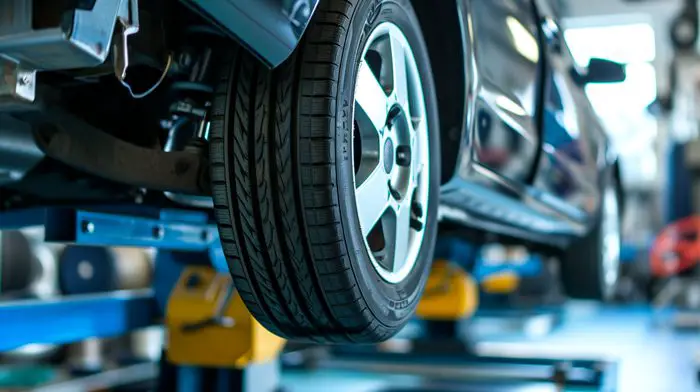
To check if your toe alignment needs attention, take a peek at your tires. Is there uneven wear? If you see extra wear on the inner or outer edges, this could point to a toe issue. However, don’t jump to conclusions, as multiple factors can cause uneven tire wear. This is why it’s smart to have a professional take a look‚Äîthey’ll pinpoint the issue with accuracy.
Getting an alignment done is pretty straightforward. Skilled technicians will use specialized equipment to measure the toe angle down to a fraction of a degree. They‚Äôll then adjust the tie rods, which control the angle of the wheels, ensuring that your car’s wheels are perfectly aligned according to specifications. I always recommend seeing a certified mechanic or alignment specialist to handle this delicate procedure.
Remember, maintaining proper toe alignment isn’t a one-time deal. I make sure to have mine checked regularly, especially after hitting a pothole or replacing suspension components. After all, staying ahead of car maintenance outperforms dealing with costly repairs down the road.
Camber Adjustment: Understanding the Basics
When it comes to wheel alignment, camber is another critical angle that demands attention. Unlike toe, which concerns the directional angle of the wheels in relation to the car’s centerline, camber refers to the wheel’s tilt vertically. Picture looking at your car from the front or the rear; camber describes how much the top of the wheels are tilted either towards the car (negative camber) or away from it (positive camber).
Just like toe adjustment, getting the camber setting right is vital for well-balanced handling and uniform tire wear. Here’s what I’ve learned: cars with a significant negative camber tend to have better cornering capabilities because more of the tire is in contact with the road when the vehicle is turning. On the other hand, too much negative camber or any amount of positive camber can lead to premature tire wear on the inside or outside edges, respectively.
Adjusting the camber on your car might be necessary if you notice uneven tire wear patterns or if your vehicle has been involved in an accident. Car manufacturers typically provide a recommended camber setting, aimed at optimizing handling and tire life under normal driving conditions. However, enthusiasts who frequent race tracks may opt for a more aggressive negative camber to improve their cornering speed.
But be wary‚Äîaltering camber settings can affect your car’s suspension geometry. This is why it’s essential to have a qualified technician perform the adjustment. They use sophisticated equipment that can measure camber to fractions of a degree, ensuring that both sides of your car are symmetrical. This precision is paramount; even small discrepancies can cause handling quirks or excessive tire wear.
It’s also noteworthy that if you adjust the camber, you may need to recheck toe settings. These two adjustments can interact with each other, meaning that a change in one could influence the other. Regular checks are recommended after any suspension modifications, including lowering or lifting your car, as these can significantly impact camber angles.
The Impact of Toe and Camber on Tire Wear and Handling
When I delve into the complexities of wheel alignment, it’s clear that both toe and camber adjustments are not just about achieving better driving performance but also about extending the life of your tires. Toe refers to the angle of your wheels in relation to the vehicle’s centerline, while camber is the tilt of the wheels when viewed from the front. These adjustments are interconnected and pivotal to attaining a smooth ride and even tire wear.
Misaligned wheels can significantly affect tire longevity. Imagine each tire as a runner on a track; if they’re not running straight, their energy is wasted, and they’ll wear out faster. Incorrect toe settings can cause the edges of your tires to erode prematurely, especially if your wheels toe-in excessively or toe-out too much. It’s similar to walking with your feet pigeon-toed or duck-footed; the unevenness is bound to have consequences.
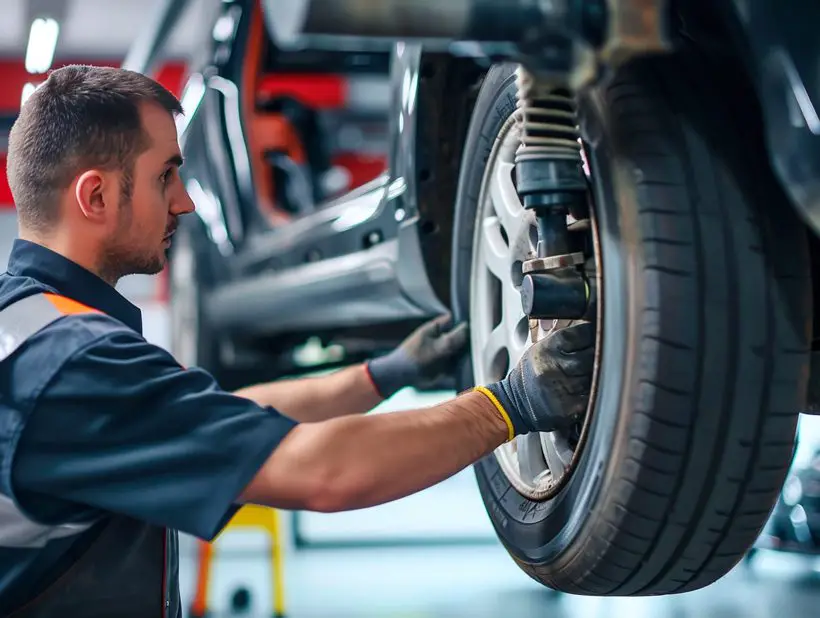
Similarly, camber misalignment can lead to uneven tire wear. If your wheels tilt too far inward (negative camber) or outward (positive camber), the tires will wear unevenly across their surface. Negative camber can be beneficial for handling during cornering since it helps maintain contact between the tire and the road. However, if the camber is too extreme, the inside or outside edge of the tire will bear the brunt of the road contact, causing it to wear down at an accelerated rate.
The interplay between toe and camber adjustments is also crucial for the vehicle’s handling. Proper alignment allows the wheels to work together harmoniously, providing a stable and responsive driving experience. When these settings are dialed in correctly, you can expect:
- Improved steering response
- Enhanced cornering stability
- Optimal fuel efficiency
- Increased safety
To maintain this fine balance, I always recommend checking your wheel alignment periodically and especially after any suspension modifications. While some drivers might be tempted to tweak their settings for a sharper driving edge, it’s vital to understand the trade-offs between aggressive alignment for performance and the practical aspects of daily driving. Regular monitoring can help safeguard against excessive wear and tear on your tires, ensuring that they last as long as possible and keep you safely on the road. That’s why it’s worth the effort to consult with a knowledgeable technician who can tailor your wheel alignment to both your driving style and your vehicle’s specific needs.
How to Check and Adjust Toe and Camber
When tackling wheel alignment, it’s essential to understand how to examine toe and camber settings. To begin, you’ll need a flat surface and some basic tools like a toe-in gauge and camber gauge. It’s always best to refer to your car’s service manual for the recommended measurements.
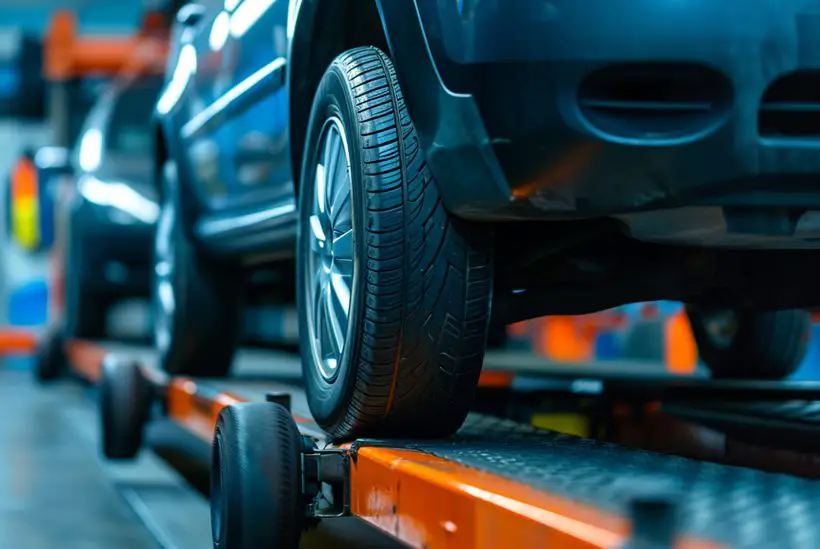
Checking Toe
First, I ensure my car is on level ground. With the steering wheel positioned straight, I measure the distance between the front edges of the tires and then again between the rear edges. These measurements should match your vehicle’s specifications. A difference indicates a toe misalignment, necessitating an adjustment.
Adjusting Toe
To adjust, I locate the tie rods, which connect the steering rack to the tires. By loosening the lock nuts and turning the tie rods, I can alter the angle of the wheels. Turning them in opposite directions changes the toe-in or toe-out, and I always ensure to make incremental changes, checking the measurements frequently.
Checking Camber
Camber adjustments are slightly more complex. I position the camber gauge against the wheel hub and take note of the reading. A positive figure indicates the top of the tire leans away from the car, while a negative number means it tilts inward. The goal is to have the camber within the range specified for my car.
Adjusting Camber
Adjusting the camber involves the suspension components. Depending on the vehicle, I might need to tweak the strut mounts or control arms. Some modern vehicles have camber bolts installed, which allow easy adjustment just by turning the bolts. With each small change, I check the gauge reading, being mindful to not stray beyond the car’s recommended camber settings.
Regular checks and adjustments to toe and camber can greatly enhance my car’s performance and tire life. Performing these checks is a proactive approach to maintain optimal alignment, and while some may prefer professional services, I find that understanding and maintaining my vehicle‚Äôs wheel alignment adds a personal level of trust and confidence in its performance on the road.
Conclusion
Mastering toe and camber adjustments is essential for maintaining your vehicle’s performance and prolonging tire life. By regularly checking these settings and making the necessary tweaks, you’re ensuring a smoother, safer ride. Remember, proper wheel alignment is key to vehicle stability and efficiency. So take the time to understand these adjustments and don’t hesitate to consult a professional if you’re unsure. Your car and your wallet will thank you for it.
